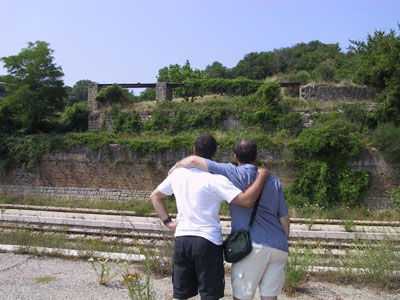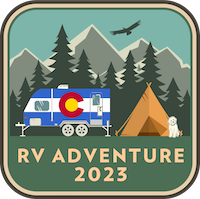Brita city
Bioswales, blackwater, and benthic nets. Microbial fuel cells, hydroponic disinfection, and pervious pavement.
Were you thinking about these things when you were in college? I certainly wasn’t. Perhaps I should have been, because the student teams in the History Channel’s City of the Future Engineering Challenge sure seem like they have bright futures ahead.
Picking up on the popularity of their “Engineering an Empire” series, the History Channel last year held a design competition in LA, Chicago, and NYC. Professional design teams had one week to design a vision of their city 100 years in the future in such a way that would be sustainable much beyond.
The winner in Chicago was Urban Lab, a small outfit on the south side whose Growing Water submission presented a Chicago infrastructure that recycles 100% of the water it needs by un-reversing the flow of the Chicago River back into Lake Michigan, resurrecting the (currently) century-old idea of an Urbs in Horto “Emerald Necklace” of parks ringing the city proper, and carving latitudinal waterways alongside “eco-boulevards” to make the whole city-sized water filter work.
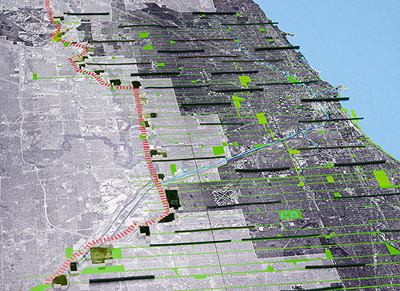
That was sorta the easy part. The heavy lifting was left for the students in the second phase who actually had to present the engineering behind it all. As a sponsor of the event (with a keen interest in promoting engineering, math, and science) IBM was asked to provide a judge for the second phase. This was me. I was elated. I wasn’t at all qualified, but I have been writing about the subcontinental divide, reversed river, and future Chicago here for a long time. The blog as street cred.
Undergraduate engineering student teams were fielded by the Milwaukee School of Engineering, Purdue University, U of I Urbana-Champaign, two from U of I Chicago, and Northwestern University. The presentations were simply remarkable. These kids — and they were kids to be sure — had put an amazing amount of time and thought into the tricky real-world problems of re-architecting a city at its most basic level. None of this was done for course credit.
Prior to the presentations the judges received ample supporting documentation for each solution: dozens of pages of equations backing up claims, diagrams, 3D renderings, and a bounty of specialized words to make the verbophile delight for hours. Advective. Biomimicry. Turbidity. Effluent. I loved it all.
The essence of the challenge in engineering Urban Lab’s design was how to design the filtration of the water in the terminal parks and along the eco-boulevards east of the subcontinental divide. Most of the teams focused on how this filtration would happen. Others also stressed the challenge of separating graywater (wastewater with everything but poop), blackwater (poop), and potable water while being able to accommodate the “100-year-storm” (Chicago, though above sea level, is essentially a swamp). Still others focused on the Urban Lab sidenote that existing santitation tunnels (not needed in their design) could be used for expanded mass transit. One team went into great detail about a Chicago Maglev train. This might be a great next project for the CTA as their current Brown Line expansion will likely finish up around 2106.
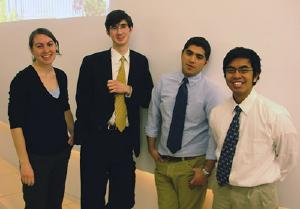
The team from UIUC won the competition with their notion of EcoTowers — residences at the terminus of eco-boulevards that pass graywater through a “biomimetic forward osmosis membrane bioreactor.” Duh. Of course they do. The towers themselves provide further filtration by running a curtain of nearly-clean water down the windows of the highrises for UV disinfection. Like living under a waterfall or inside the Beijing Olympic natatorium. Brilliant.
Chicago has a very long way to go to approach anything like this design, of course. Green roofs are a start, I suppose. Just glad people are working the problem. Even more glad that career-minded students are taking it so seriously. Bravo to all the teams.
See also on Ascent Stage: City of the Future and 10 Visions, an exhibition from the Art Institute
Terraform this!: SXSW podcast available
Do you want to do your accounting inside a virtual world?
Terraforming the Internet panel, MP3 26.8MB.
OS friction
Last week I had to travel without my Mac. I maintain a Thinkpad running XP that’s pretty much always in synch with my main work laptop, a first-gen MacBook Pro. This is mostly to have a hot backup ready in case of calamity, but it also serves the rare instance when I’d rather not rub it in to my co-workers that I have a Mac and they don’t. Such was last week.
The switch is always interesting because, functionally, the two set-ups are identical. Got all my main apps; got all my data (most of which is web-based anyway). It is precisely this functional parity that does a great job of highlighting that which truly differentiates MacOS. Not visual luster. Little things like apps not hanging/dying inexplicably. Not having to prowl around the tray and task manager killing off rogue apps. The ease of WiFi connectivity. Lightweight PDF viewing. (Acrobat, you are a swollen beast.)
I’ve noted before a few apps that I really miss on XP such as Quicksilver and BluePhoneElite. These apps don’t — can’t — have analogs in the Windows world: they are Mac-ish through and through. To this list I’d add Growl, Synergy, and Dashboard. (Yes, Yahoo Widgets exist to the PC, but it simply is not the same feel as Dashboard.)
I’ve not used Vista, so I’m not prepared to jump into that fray. But I have to think that the real differences between the OS’s are more fundamental than any rev could address. There’s just more friction in Windows.
The law of conservation of energy (a productivity rule to live by!) states that no energy is destroyed due to friction, though it may be transferred or transformed — usually into heat. That’s basically the case here. All the little frictive annoyances of Windows rubbing against your ability to achieve a task until the whole thing smolders in delay, disappointment, or anger.
See also Gruber’s related post on what makes software “smoother” (though he doesn’t cast it in those terms).
My son, Damien
I’m searching for the 666 birthmark on my 3-year-old son’s scalp.
Last week, during a moment of attending to our other kids at our neighborhood park my wife turned to find said son throwing rocks at a homeless man. Let that sink in for a moment. Throwing rocks at an indigent citizen. Now, as she explains it, he was merely throwing rocks that she had previously told him to put down and they were going in the direction of the homeless man. (And the man was not in the park but on the sidewalk.) But I think it is more insidious than that. I think my son merely scouted the terrain and assessed the most high-odds target. A person who was, let’s say, not moving so quickly and was encumbered with the trappings of someone who lives with what he carries. An easy mark. He was scolded for throwing rocks at any person, but this was beyond reproach. Not that he knows homeless from not. But still. He then had the gall to tell the guy that he looked like Santa Claus. On hearing this story, I resisted every urge to tell my son that this is what Santa does when he’s not building toys at the North Pole. Perhaps my dastardly genes have caused this after all.
Then, later in the week, when my sister was over with her son who is potty-training, my son decided to slink off with the plastic training pot and take a crap in it. What the hell, I’m sure he thought. Unknown to anyone, he left his transaction in it (he’s fully trained on a regular toilet, mind you) and then proceeded to hide the pot. My wife smelled dung but could not find it until she uncovered the trainer and lifted the lid. Clearly the work of a closet pooper.
The coup de grace came tonight. The whole family was out to dinner at a local bar/restaurant. Son was “playing” a video game (quarterless) when a waitress walked by. He stuck his hand out and grabbed her butt! She turned to us and said “Did you see that?! He grabbed my ass!” I stifled the urge to laugh before making him apologize. Later I asked her if that was the first time that had happened to her. No, of course not; she works Saturday nights. But I am quite sure she’s never been fondled by a three-year-old.
What the hell is happening? Where is he learning this stuff? I don’t pelt the dispossessed, stash poop, or fondle women who are not my wife. Is it television? If so, Hi-5 has a lot of explaining to do.
Rock your tonsil rock
I’ve been interested in what makes a vibrant online community lately. How to begin one? How to sustain one? How not to let it spiral out of control? Ascent Stage is not in any sense a community. Traffic is too low, posts too infrequent.
But recently an old post came back to life and has me wondering. In June 2005 I wrote about a disgusting biological phenomenon known as tonsiloliths. I wrote it after one of my co-workers plucked one from her mouth. Being a fan of all things disgusting I had to write about it. Turns out lots of people suffer from these nasties. My post was not a first-hand account of a sufferer or a source of any medical advice. In fact, I was pretty crude about the whole thing. But, it attracted relieved commenters early on who were simply glad to find others like them.
Recently the post has reached a bit of a tipping point. Comments are way up; most are relatively long, breathless expressions of gratitude to be part of a small group of people helping each other. I read along as a third-party, an accidental self-help guru.
Over a quarter of all site traffic (27.45%) to Ascent Stage goes to this post alone.
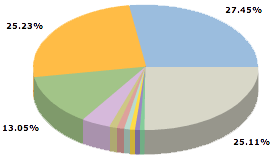
(Rounding out the other big slices of the pie in order are How to create a LEGO mosaic, everything else, and the home page.)
So what’s the lesson for online communities here? Well, probably that there’s a lot of luck in fomenting one. The web is the perfect medium for yoking together micro-communities. You’d think that all you have to do is write about a topic that’s not been covered elsewhere (especially if it is medical in nature) and you’ll probably have a little tribe on your hands. But really, it can be just dumb luck.
Kinda warms the heart, though.
Security perverts
An open letter to depraved male travelers who are titillated by security procedures at airports:
Sirs, I know you travel a lot. Travel is tough. Long days and nights away from your significant other. This is understood and I empathize. But this does not give you the right to turn the airport security checkpoint into a private fantasy.
Here are some tips:
- Partial disrobing in proximity to a woman doing the same does not constitute foreplay.
- The woman in front of you definitely does not find it funny or novel when you snicker “Any more clothes into the bin and this would be R rated!”
- Barefoot does not mean nude.
- There is nothing you could possibly want to see going on behind that curtain there. Just move on.
- A blouse is not an overgarment so settle down there, Sparky.
- You may not choose who gives you a patdown. Also, there is no patdown with release.
If you absolutely need your fix of TSA-inspired turn-on, I recommend the Internet. I am quite certain there is a niche fetish forum devoted to this sort of thing.
Thank you for your understanding.
The joy of spreadsheets
I’m really liking Google Spreadsheets.
Fact is, I’ve never had much use for spreadsheets, which is why I’m hopelessly lost in pivot tables and anything more complex than a sum formula. (My wife, by way of contrast, can make a spreadsheet compile to solve prove Fermat’s Theorem, I am quite sure.) Still, I have always loved spreadsheets’ boxy structure. I keep lots of data in spreadsheets, but it doesn’t do anything. Just sits there. Tabularly.
But a shared online spreadsheet is a different beast altogether. I have a variety of home-related data in gSpread (sounds dirty, no?) so my wife and I can reference the same stuff. Two co-workers of mine and I keep track of daily You Don’t Know Jack scores in a shared sheet. (By year’s end — assuming Google adds charts to the tool — the YDKJ score log should be an interesting set of data to mine.)
This weekend my college pals and I conducted our annual fantasy baseball draft. It is an excuse to get together in person for much hazing and idiocy, but this year gSpread made it much more efficient. Most of us had laptops open with a Excel sheet imported into Google. One person updated the main player list, another the By Pick list, and another the By Team list. We all saw everything instantly, editing the same tables simultaneously. As did a friend at home who could not make it to Chicago. A perfect use for shared data.
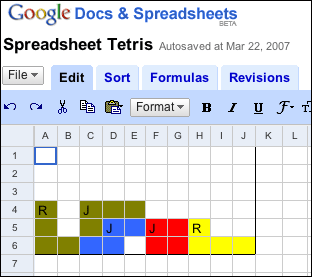
But the best use by far is what I call two-player, slow-motion Tetris. Actually it is a kind of a merger of Tetris and checkers or Connect Four. Each player (or collaborator in gSpread parlance) clicks on cell that randomly selects a piece (=randbetween(1,7)) then places that piece in whatever rotation desired. The goal is to clear a line as in normal Tetris but also to block someone else from doing so. Letters in the pieces let players know which pieces are theirs — useful since the game takes weeks to play out. Fun, but dorky. No, fun because dorky. Who’s in?
Velcro tie
So I’m at Starbucks, behind a cop waiting for his double mocha-frappa-hoohaa. His tie is a little askew so the baristas, who clearly know him, start giving him a hard time about it, saying it looks like a clip-on, ha ha ha. Schoolyard-bullying (of a man with a loaded gun). He goes along with it and then yanks it off completely. Velcro! Oh then the name-calling really begins.
And then he explains that the last thing a cop wants around his neck is a built-in noose.
Duh. Laughing stopped.
You gotta think this was learned the hard way after some cop-on-bad-guy fracas, somewhere.
Apologies to ZZ Top.

